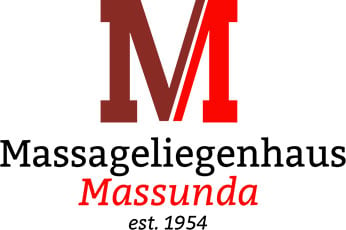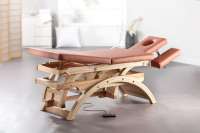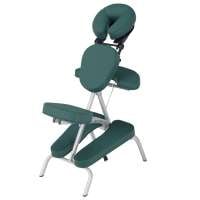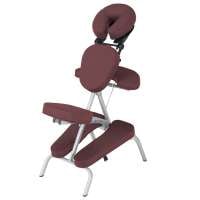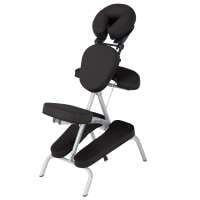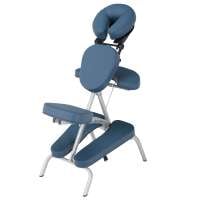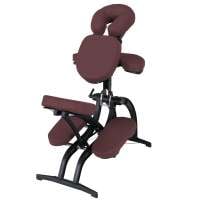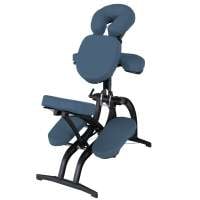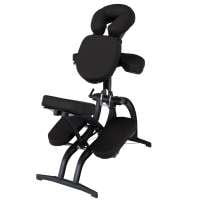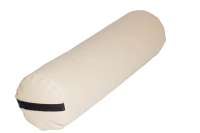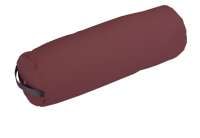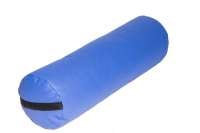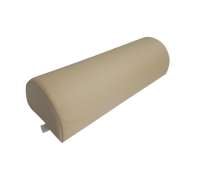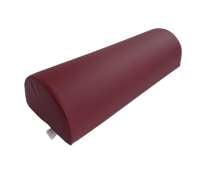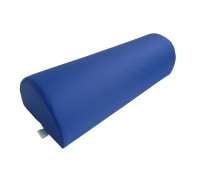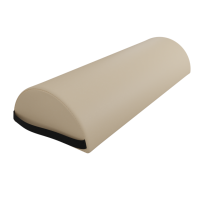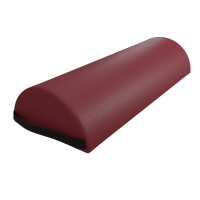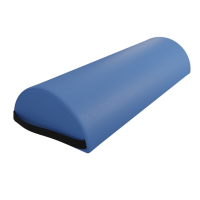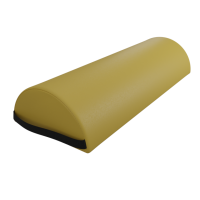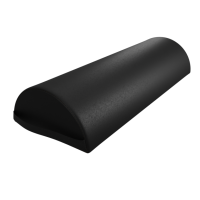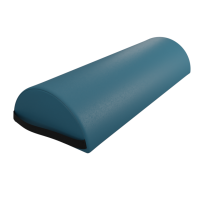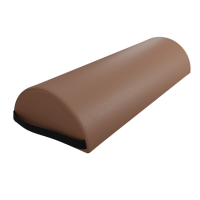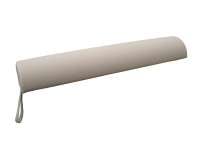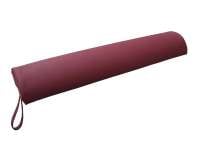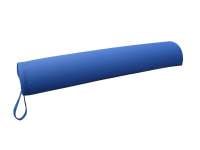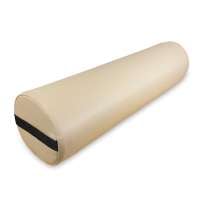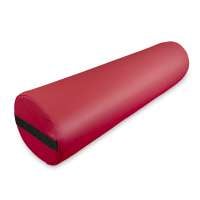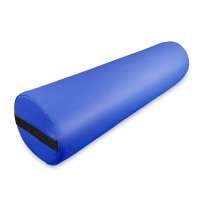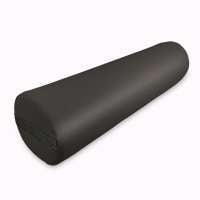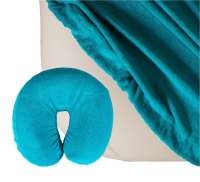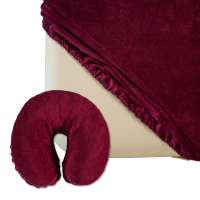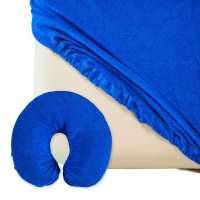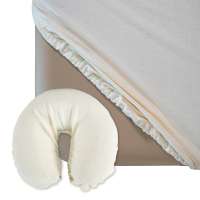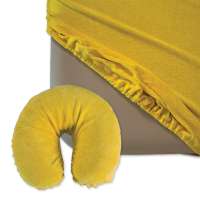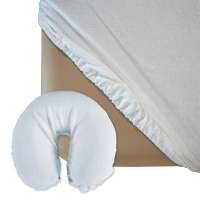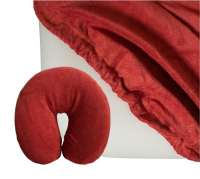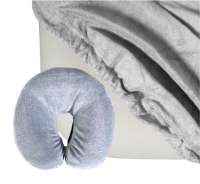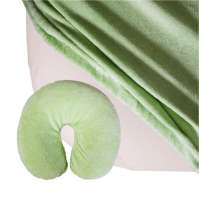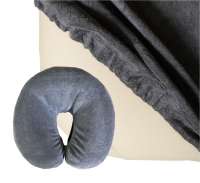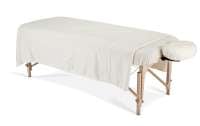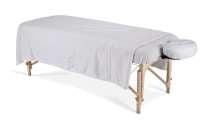
Pregnancy is a time of physical and emotional changes for women. During this time, massage can help alleviate the inevitable physical discomforts while promoting mental health. As a masseur, it is your responsibility to support expectant mothers by applying appropriate massage techniques to meet the special needs and challenges during pregnancy.
In this blog article, we will cover the following topics:
-
Anatomy and physiology of the pregnant woman
-
Techniques and tips
-
Benefits of pregnancy massage
-
Contraindications and precautions
-
Case studies and practical experiences
-
Conclusion
1. Anatomy and Physiology of the Pregnant Woman
During pregnancy, a woman's body undergoes a variety of changes to accommodate space and nutrients for the growing baby. These changes can affect muscles, joints, and the lymphatic system, influencing the need for specific massage techniques. In this section of the article, we will examine the anatomy and physiology of a pregnant woman's body to gain a better understanding of the effects of pregnancy on the body.
Some of the key changes that occur during pregnancy include:
-
Cardiovascular system
-
Hormonal balance
-
Lymphatic system
-
Uterus
Cardiovascular system
During pregnancy, there is an increase in blood circulation in the woman's body to supply the growing baby with oxygen and nutrients. However, these changes can also mean increased stress on the cardiovascular system, leading to higher heart rate and blood pressure. Additionally, the amount of blood plasma in the pregnant woman's body also increases, which in turn increases blood volume.
Changes in blood circulation can also cause swelling in the joints and increased pressure on blood vessels, which can affect blood flow. Swelling can occur particularly in the legs and feet, as gravity pulls blood downwards and the return of blood to the heart becomes more difficult. As a result, discomfort such as varicose veins, fatigue, and leg pain may occur.
Hormonal balance
The production of the hormone relaxin plays a particularly important role. Relaxin is produced by the ovaries and placenta and serves to loosen ligaments and tendons in the body.
In the pelvic area, relaxin is particularly active and causes expansion of the birth canal. This ensures that the baby can pass through the narrow canal during birth. However, the effects of relaxin can also lead to instability and pain in the joints and muscles. The ligaments and tendons that normally provide stability are loosened by the hormone relaxin, which can impair their function.
This can lead to pain in various areas of the body, such as the pelvic and back areas. Joints can also become more unstable and thus more susceptible to injuries and pain.
Lymphatic system
In addition to the cardiovascular system and hormonal balance, the lymphatic system also undergoes changes during pregnancy. One of the well-known effects is the increased accumulation of fluid in the tissues, known as edema. This can cause swelling in the hands, feet, legs, and face, and can also cause pain in some women.
The cause of this phenomenon is increased pressure on blood vessels caused by the growing baby and the increased amount of blood plasma. The lymphatic system has the important task of transporting excess fluid from the tissues. However, during pregnancy, this system can be overloaded, leading to increased fluid retention.
Uterus
During pregnancy, the uterus grows to accommodate the baby, resulting in a shift in the body's center of gravity and changes in posture. These changes can lead to tension in various muscle groups, especially in the lower back, hips, thighs, and shoulders.
The altered posture during pregnancy can also result in certain muscles being overused and other muscle groups becoming weakened. This can lead to an imbalance in muscle distribution and potentially result in pain and injuries in the long term. Massage can help reduce these tensions and imbalances, bringing the body into a healthier state.
It is also important to note that the growing uterus can strain the spine, particularly in the lower back area, leading to pain and tension.

2. Techniques and Tips
A gentle massage can be a soothing support for the expectant mother and help alleviate the physical discomforts of pregnancy. However, it is important to note that some massage techniques and positions may not be suitable for pregnant women. This section discusses appropriate massage techniques and positions for pregnant women, as well as tips for supporting comfort and relaxation during the massage.
What massage techniques are suitable for a pregnancy massage?
During pregnancy, gentle massage techniques are preferred. Avoid techniques that apply strong pressure on the abdomen or require deep stretches or twists of the body. Recommended techniques include:
-
Effleurage: A gentle technique used to relax muscles and promote circulation. Often used to massage the back and legs.
-
Kneading: A technique that applies deeper pressure to the muscles to release tension and knots. Can be applied to the shoulders, neck, and calves.
-
Friction: A technique used to promote circulation and improve metabolism. Can be used to massage the back, arms, and legs.
-
Vibrations: A technique that involves rapid movements to relax the muscles. Often applied to the thighs and calves.
What positions should be avoided during a pregnancy massage?
During the massage, some positions should be avoided to ensure the well-being of the pregnant woman. Here are some positions that should be avoided during the massage:
-
Prone position*: As the abdomen grows during pregnancy, the prone position becomes uncomfortable for most women. Therefore, avoid lying on the stomach on a conventional massage table during the massage.
-
Supine position: In later stages of pregnancy, the supine position can impair circulation and cause dizziness. Therefore, avoid prolonged supine position during the massage. Instead, you can choose a semi-seated position or lie on your side.
-
Strong twists and stretches: Avoid strong twists and stretches of the body during the massage, as these positions can increase the risk of injury.
* Did you know? There are pregnancy massage tables designed specifically for massages in the prone position. These tables have removable cushion elements to relieve pressure on the abdomen and chest while lying on the stomach. A tension strap fabric ensures that the baby bump is supported and not allowed to hang freely. One example of such a massage table is the Zen Relax with pregnancy option.
Tips for supporting comfort and relaxation during the massage
To improve comfort and relaxation during the massage, you can consider the following tips:
-
Use comfortable pillows and cushions: These support the curves of pregnancy and reduce pressure on certain areas of the body. For example, a pillow or cushion under the abdomen or between the knees can help align the spine and improve comfort.
-
Use relaxation techniques: Breathing exercises and relaxation techniques such as meditation or yoga can help calm the mind and relax the body. Integrate these into your massage to enhance the relaxation effect.
-
Choose a quiet environment: Gentle music, dim lighting, and a pleasant temperature help create a calming atmosphere.
-
Use safe and natural oils: If oils are used during the massage, make sure they are safe and of natural origin. Some oils may not be recommended during pregnancy as they may cause an allergic reaction or other unwanted effects.
3. Benefits of Pregnancy Massages
Here are some of the benefits of pregnancy massages:
Improved circulation and pain relief
During pregnancy, there may be reduced circulation in certain areas of the body, especially in the legs and pelvic area. Massages can help improve circulation by using gentle massage techniques to promote blood flow in these areas. Improved circulation can reduce swelling and water retention, which are common issues during pregnancy. Additionally, pregnancy massages can help relieve pain and discomfort associated with pregnancy. Many pregnant women experience back, neck, and shoulder tension due to the added strain from the growing baby and changes in posture. Pregnancy massages can help relax the muscles in these areas through targeted massaging, resulting in pain relief.
Reduction of stress and anxiety
Pregnancy can be a stressful time in a woman's life as she deals with physical, emotional, and hormonal changes. Massages can help reduce stress and anxiety. During a massage, hormones like oxytocin and serotonin, known as "feel-good hormones," are released, which can boost well-being. Furthermore, the calming effects of the massage can help lower stress hormones like cortisol, leading to improved relaxation and better mental well-being.
Improved sleep and mood
Pregnancy can also affect sleep, with many expectant mothers experiencing sleep disturbances such as insomnia, frequent urination at night, or restless sleep. Pregnancy massages can help improve sleep by promoting relaxation and reducing stress. Hormonal changes during pregnancy can also cause mood swings such as increased irritability, anxiety, or depression. Pregnancy massages can help improve mood by promoting the release of endorphins, known as "feel-good hormones," which can boost well-being. Additionally, the relaxing and calming effects of the massage can help reduce stress and anxiety, which can have a positive impact on mood.

4. Contraindications and Precautions
Prenatal massages can be a beneficial addition to prenatal care, but there are certain things that massage therapists should be aware of to ensure the safety of both the mother and the baby.
When should prenatal massage be avoided?
There are certain situations in which prenatal massages are contraindicated and should be avoided. These include:
-
Risk of preterm labor: Prenatal massages should be avoided in pregnant women who have an increased risk of preterm labor or have experienced premature contractions. Massages can have a stimulating effect on the uterus, increasing the risk of premature contractions.
-
High blood pressure or preeclampsia: Prenatal massages should be avoided in pregnant women with high blood pressure or preeclampsia, a severe pregnancy complication characterized by high blood pressure and proteinuria, as massage can further increase blood pressure.
-
Placenta previa: Pregnant women with placenta previa, where the placenta is located low in the uterus and partially or completely covers the cervix, should not receive prenatal massages to minimize the risk of bleeding or placental injury.
-
Infections or skin injuries: Prenatal massages should be avoided in cases of acute infections, inflammations, or skin injuries in the massage area to prevent the risk of complications or infections.
Precautions
Even in the absence of contraindications, massage therapists should take certain precautions to ensure the safety of the mother and the baby. These include:
-
Communication with the pregnant woman: Open communication with the pregnant woman is important to understand her individual needs and symptoms. Massage therapists should inquire about the general well-being, any complaints, pain, or risk factors before starting the massage.
-
Gentle massage techniques: Prenatal massages should be performed with gentle pressure to minimize the risk of injury or overstimulation of the uterus. Avoid applying strong pressure on the abdomen, lower back, and other sensitive areas.
-
Positioning of the pregnant woman: Proper positioning of the pregnant woman is crucial to ensure comfort and safety. Use special positioning aids such as pregnancy pillows to reduce pressure on the abdomen and spine.
5. Case Studies and Practical Experiences
Now we want to make the theory more illustrative. For that, we sat down with masseuse Janina Schnabel.
"As an experienced masseuse, I have performed many pregnancy massages in my practice and have experienced various challenges. I have brought two anonymized examples.
1. Client with back pain and anxiety
One of my clients was in the third trimester of her pregnancy and suffered from severe back pain due to weight gain and changed body posture. She also had anxiety related to her impending childbirth and concerns about her baby.
Solution: To alleviate her back pain, I applied special massage techniques that targeted relaxation of the back muscles while she lay in a lateral position to minimize pressure on her abdomen. To reduce her anxiety, I performed a gentle and soothing massage that can release oxytocin and serotonin to improve mood. I also spent a lot of time talking to her and listening to her to understand her fears and provide emotional support.
2. Client with sensitivity to certain massage techniques
Another one of my clients was in the second trimester of her pregnancy and had increased sensitivity to certain massage techniques, especially in the legs and feet.
Solution: To accommodate her sensitivity, I applied gentler massage techniques and focused on using lighter pressure and gentle stroking movements. I also placed a lot of emphasis on staying in touch with her and obtaining feedback during the massage to ensure she was comfortable and did not experience any unpleasant sensations."
Let’s Look at Some Numbers
As always, we are interested in what current studies say about the topic. For example, the American Pregnancy Association conducted a survey in 2019 which found that 84% of pregnant women surveyed considered pregnancy massages to be a helpful measure for relieving physical discomfort during pregnancy.
Pregnancy massages can also have a positive effect on anxiety and depression. A study published in 2015 titled "The effect of massage therapy on depression in pregnant women: a pilot randomized controlled trial" showed that women who received massages had significantly lower levels of anxiety and depression compared to the control group.
However, these numbers should be interpreted with caution. While massage can provide temporary relief of symptoms, it does not replace psychological treatment.
6. Conclusion
Pregnancy leads to various changes in a woman's body, including
-
in the cardiovascular system
-
hormone balance
-
lymphatic system
-
and uterus
These changes can result in various discomforts such as
-
swelling
-
pain
-
and muscle tension
In particular, the hormone relaxin loosens ligaments and tendons in the body, which can cause instability and pain. Additionally, the lymphatic system is often overloaded, leading to edema. Massages can help alleviate these discomforts and promote a healthier state of the body.
Specifically, a pregnancy massage can:
-
Improve blood circulation
-
Reduce tension in the back, neck, and shoulders
-
Reduce stress and anxiety
-
Enhance well-being by releasing oxytocin and serotonin
-
Improve sleep
However, it is important to note that there are certain contraindications where pregnancy massages should be avoided to ensure the safety of both the mother and the baby. These include an increased risk of preterm labor, high blood pressure or preeclampsia, placenta previa, as well as acute infections, inflammations, or skin injuries in the massage area.
How did you like the article?
With your feedback, we can improve our content.
❤️ Very interesting! - ☺️ Okay. - ☹️ Not interesting.

